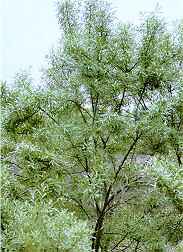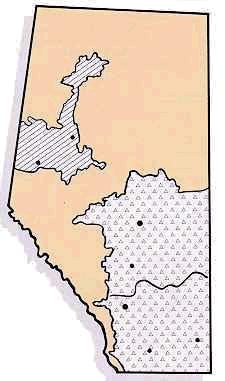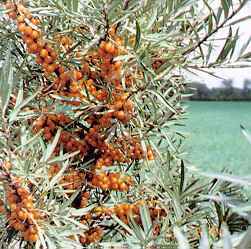| | Plant characteristics | Nitrogen fixing | Site preference | Hardiness | Uses | Problems | Pruning
.

Scientific Name: Hippophae rhamnoides L.
Plant Characteristics
Sea buckthorn is a large deciduous shrub growing to a mature height of 4 to 6 m (13 to 20 ft), a spread of 3.5 m (15 ft), and an annual growth of 10 to 20 cm (4 to 8 in.).
It is irregular in shape with spiny branches. Male and female flowers occur on different plants (dioecious). The six - year - old and older wood should be removed to promote vigorous growth of the shrub.
Branches - Grey, usually spiny.
Flowers - Inconspicuous, yellow, appearing before leaves.
Fruit - Very showy orange-yellow berries persisting through winter.
Leaves - Linear to linear-lanceolate, 2 to 6 cm (1 to 2.5 in.) long, alternate, covered on both sides with silvery-white scales, undersides covered with brown dots.
Propagated by seeds sown in autumn or stratified, cuttings of ripened wood in spring, root cuttings, or suckers.
Nitrogen Fixing
Sea buckthorn may have some roots nodulated with nitrogen fixing bacteria.
Site Preference
Sea buckthorn prefers sandy soil, is intolerant to shade, can survive drought conditions, and can tolerate alkaline soils.
Hardiness
Hardy - will survive under extreme climate exposure.
.


Uses
Sea buckthorn can be planted 1 to 3 m (3 to 10 ft) between plants in the row and 5 to 8 m (17 to 26 ft) between rows.
Problems
Aggressive suckering; must cultivate to control.
Pruning
Removal of older stems will keep the plants vigorous.
.

Shelterbelts Varieties for Alberta provides information on a number of other trees and shrubs than may be suitable for shelterbelts.
Visit our website directory for the Reforestation Woodlot Listings. |
|